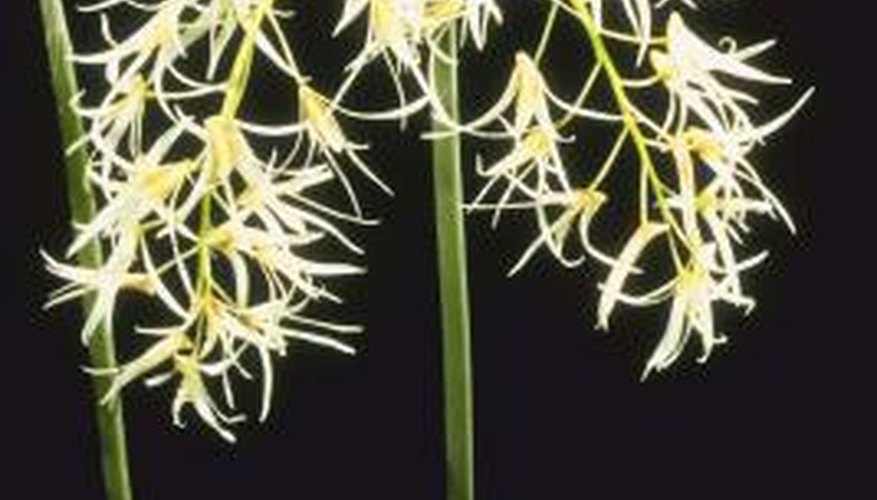There are many orchid groups known as spider orchids. Members of the Brassia genus, for example are a diverse group from South America. Other orchids with this common name belong to the Ophrys and Habenaria genera. All have adaptations designed to make them more successful in their habitat.
Reasons for Adaptation
Orchids have developed interesting adaptations to attract pollinators and ensure reproduction and self-preservation. To attract pollinators, orchid flowers use mimicry to copy the visual appearance of an insect or produce a chemical similar to what the insect produces.
Visual Adaptations
The flowers of spider orchids in the Brassia group have long petals that resemble a spider in its web. This orchid has adapted to trick its pollinator, a spider-hunting wasp, into thinking that the flower is its prey. As the wasp stings the flower, it becomes covered in pollen. When the wasp visits another spider orchid, it deposits the pollen onto the flower, unknowingly assisting in orchid reproduction.
- The flowers of spider orchids in the Brassia group have long petals that resemble a spider in its web.
- When the wasp visits another spider orchid, it deposits the pollen onto the flower, unknowingly assisting in orchid reproduction.
Chemical Enticement
The water-spider orchid (Habenaria repens) grows in lakes and swamps. This orchid has adapted to its habitat by releasing a chemical that discourages the red crayfish from swimming near and eating parts of the orchid. In another example, the spider orchid flower in the Ophrys group emits a chemical that is specifically designed to entice its pollinators to visit the flower.
